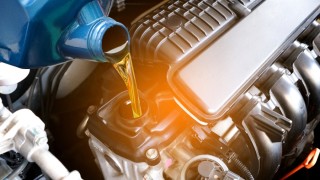Taking a thorough test drive could land you the car of your wildest dreams, like Chevrolet, Mazda, Mitsubishi, latest Mercedes, Toyota, Nissan. If you are the customer you should remember the most important thing testing a used car: you are always right. You arrange the meeting when it comes to your test drive. If anything makes you feel uncomfortable – just walk away. Your goal isn’t to diagnose problems in a test drive. You just want to identify problems for your mechanic in order to inspect and suggest solutions, including price. You shouldn’t try to solve the car’s problems during the test drive.

Preparing for the test drive pack a notepad or recorder. They will help you remember your preferences. You should map out a driving route. Choose any route you wish but don’t remember to include a mixture of local streets, highways, and a big empty parking lot. Don’t let the owner direct the trip.
The test drive should be for at least a half-hour. During this period of time you can understand if you want this car. Ask for all the records of the vehicle, including the owner’s guide and maintenance records. It is worth making sure the basic tire changing tools are still with the car.
Examine the car (walk around it). Make sure there are no chips or scratches (many chips and scratches along the wheelbase could indicate it was driven in less than ideal conditions). Look thoroughly at tires.
You should look the interior over for any spots or stains. See if you can set the seat to your comfort. Inspect everything including power seat buttons. Are they easy to operate when the door is closed? Don’t compromise. You are going to spend lots of thousands of miles driving.
Adjust the mirrors to your comfort. Make sure if the radio and air conditioning controls are within easy reach. Adjust the steering wheel.
Turn the key. You’ll do it at least twice a day for as long as you own the car. See how easy it is to remove the key. See if the car starts easily. Finally, make sure the seller has two sets of keys and even a valet key. It’s too expensive to replace the keys.
To inspect the brakes you should find a quiet area, get the car up to the maximum possible legal speed, and jam on the brakes. The brake pedal should have a firm feel.
Get a feel for the transmission: Does the car shift easily from park to drive if it’s an automatic? A loud clunk does not necessarily mean that there is a problem, but make a note so your mechanic can check it out. Remember, that a manual transmission should shift easily and smoothly among the gears. Also the clutch should engage the transmission easily.
Check up the steering. When you turn the steering wheel it should respond promptly. Check the alignment: When safe to do so take your hand off the wheel and see if the car pulls in one direction. It is recommended to do this a couple of times on different road surfaces. As you probably understand, this test indicates potential front-end alignment issues.
If you’re still interested in buying the car, ask the owner when you can bring it to a mechanic. You shouldn’t buy a vehicle that has not been independently inspected if you don’t want to open yourself up to a lot of headaches.
If you have any doubts, walk away. There are plenty of cars like Mercedes-Benz E-class for sale. Choose any car to your wish and test it properly!



